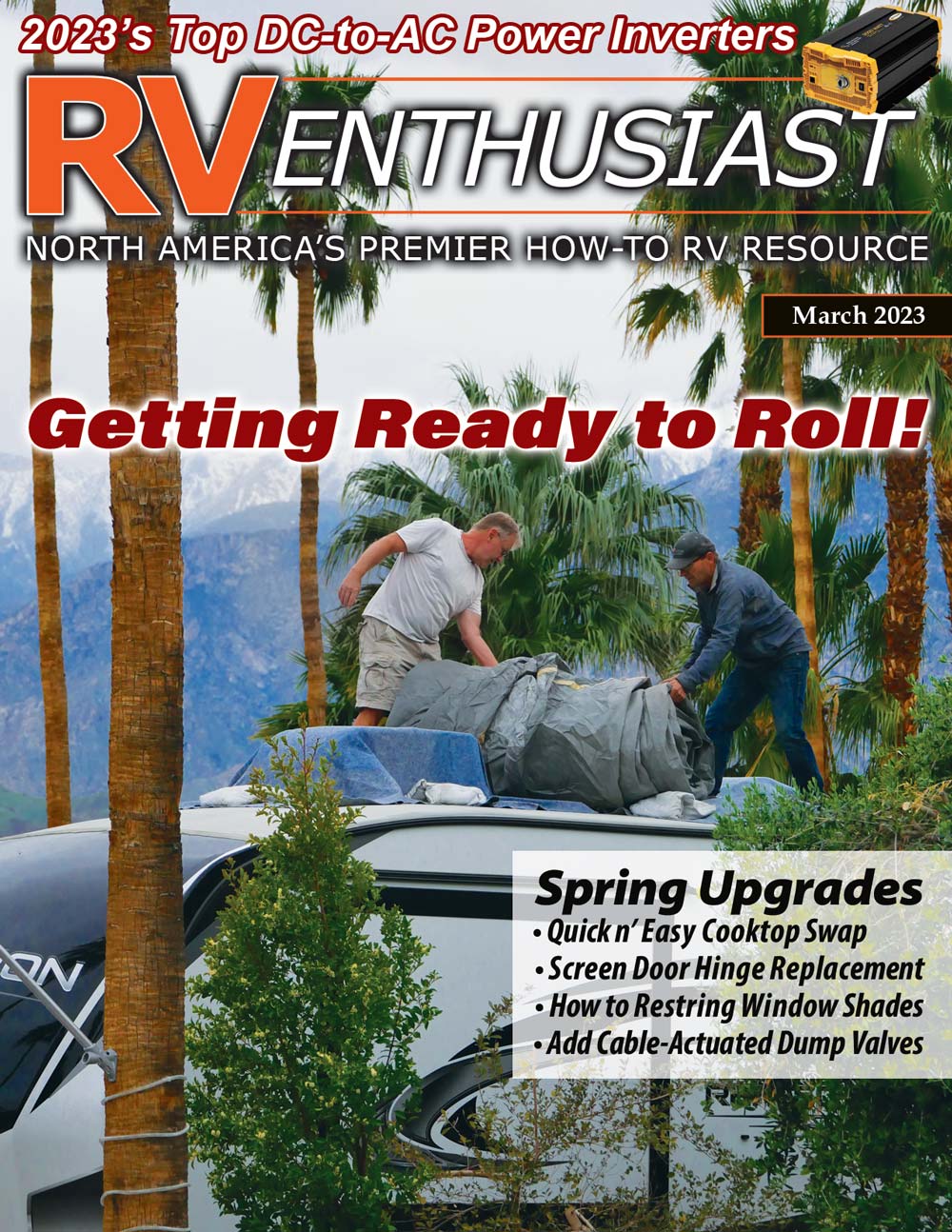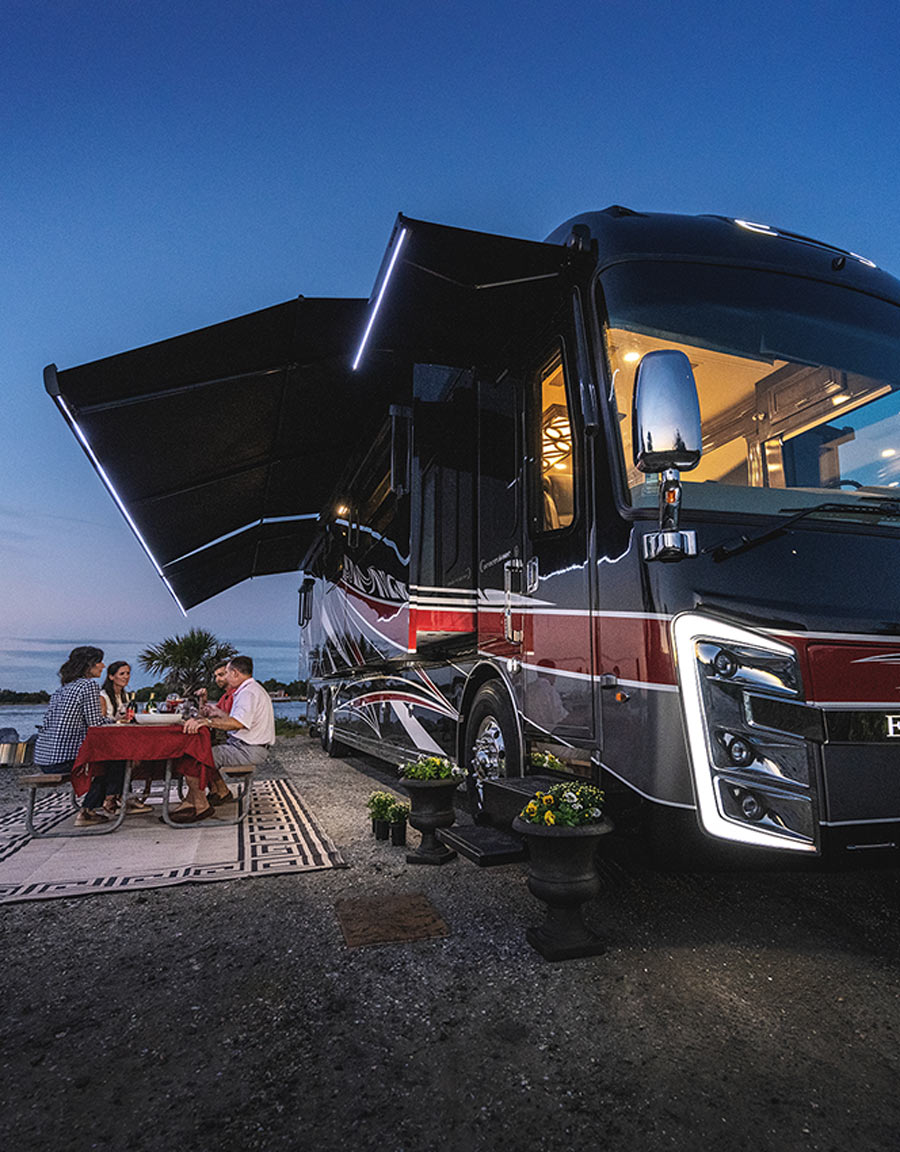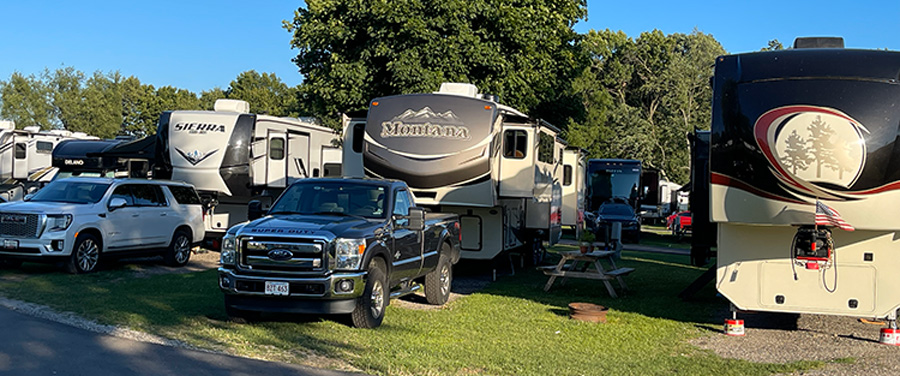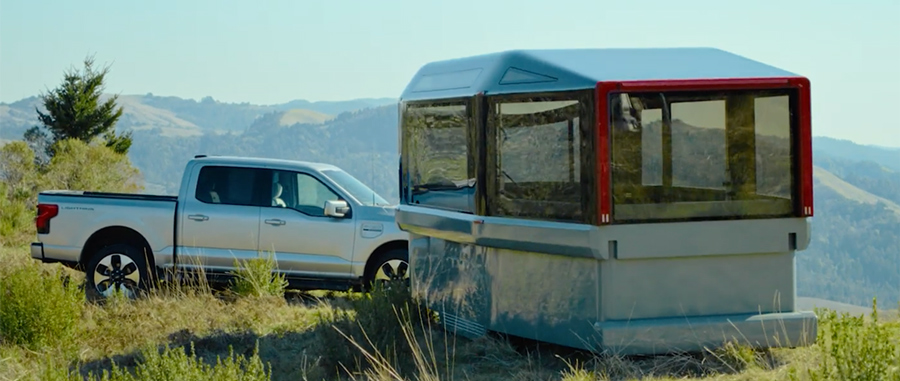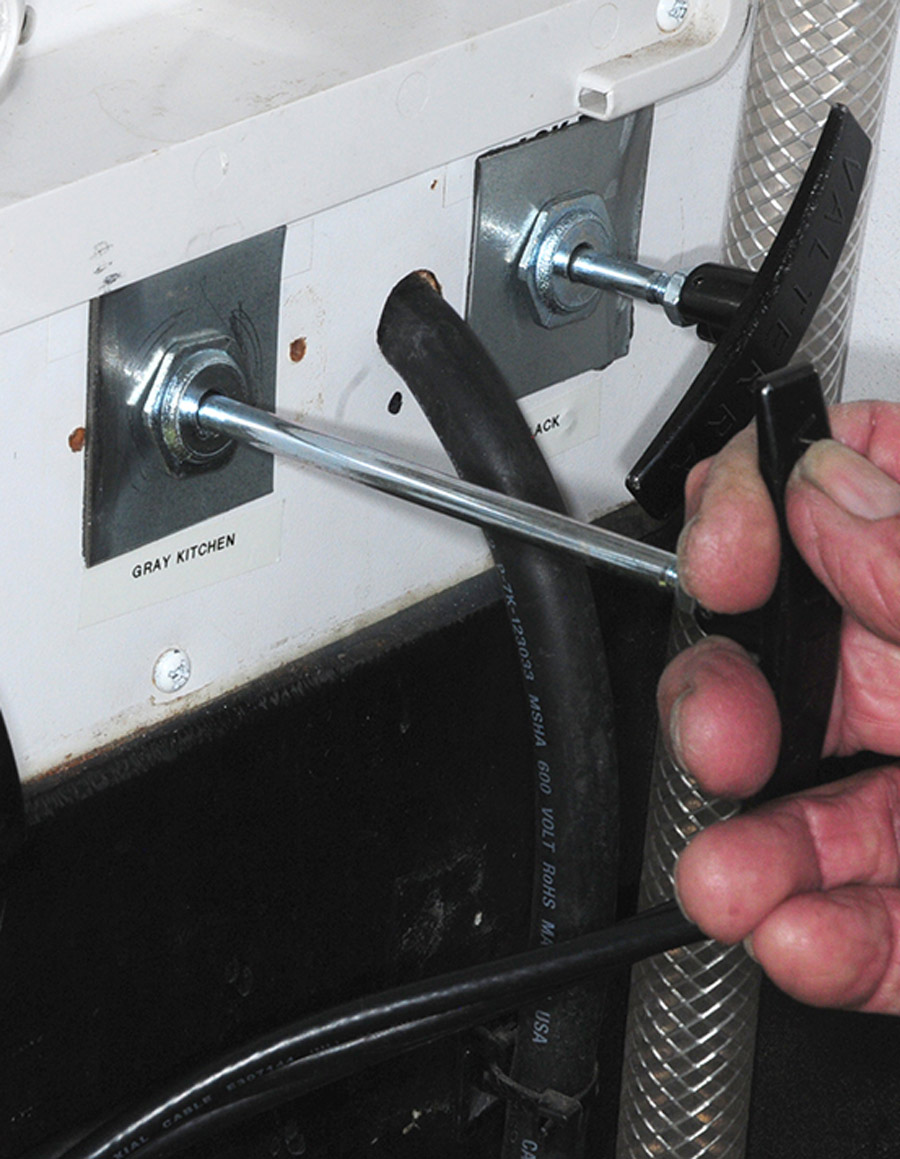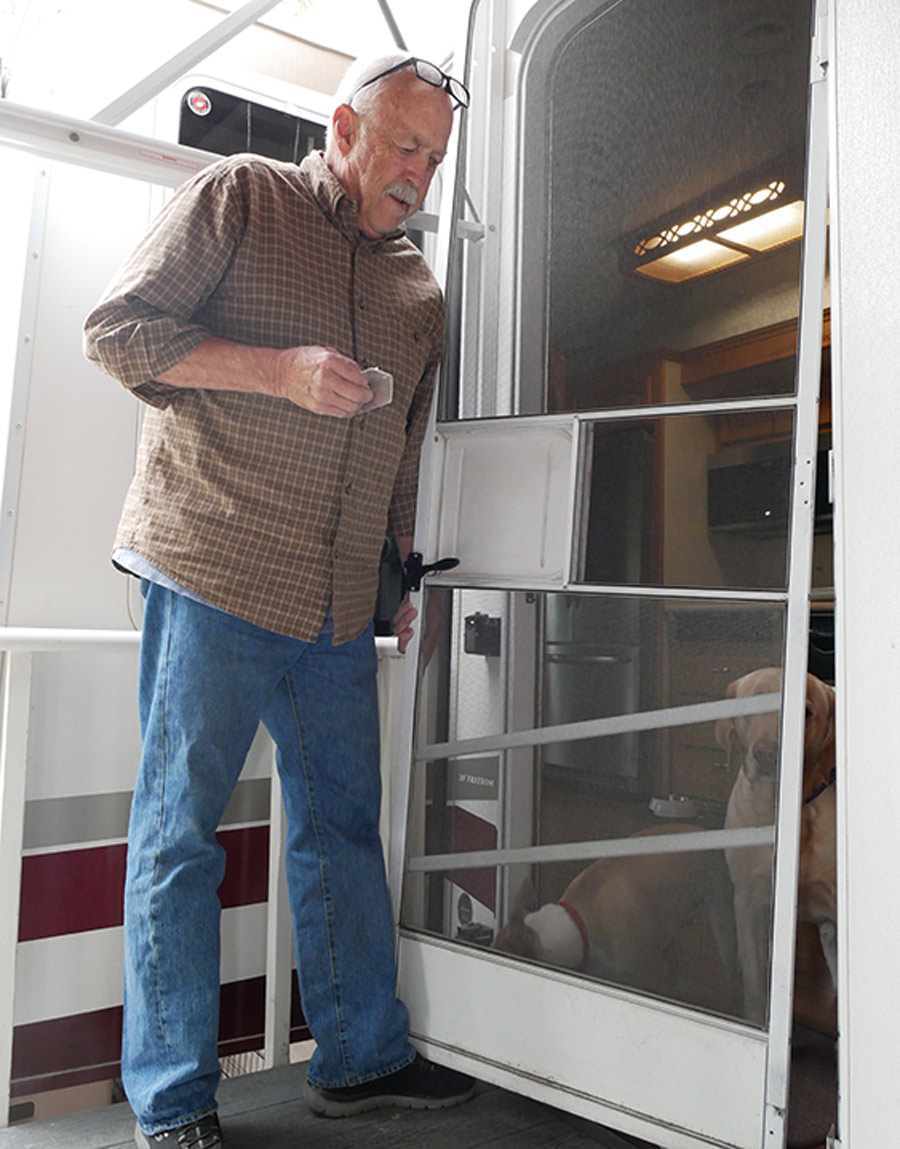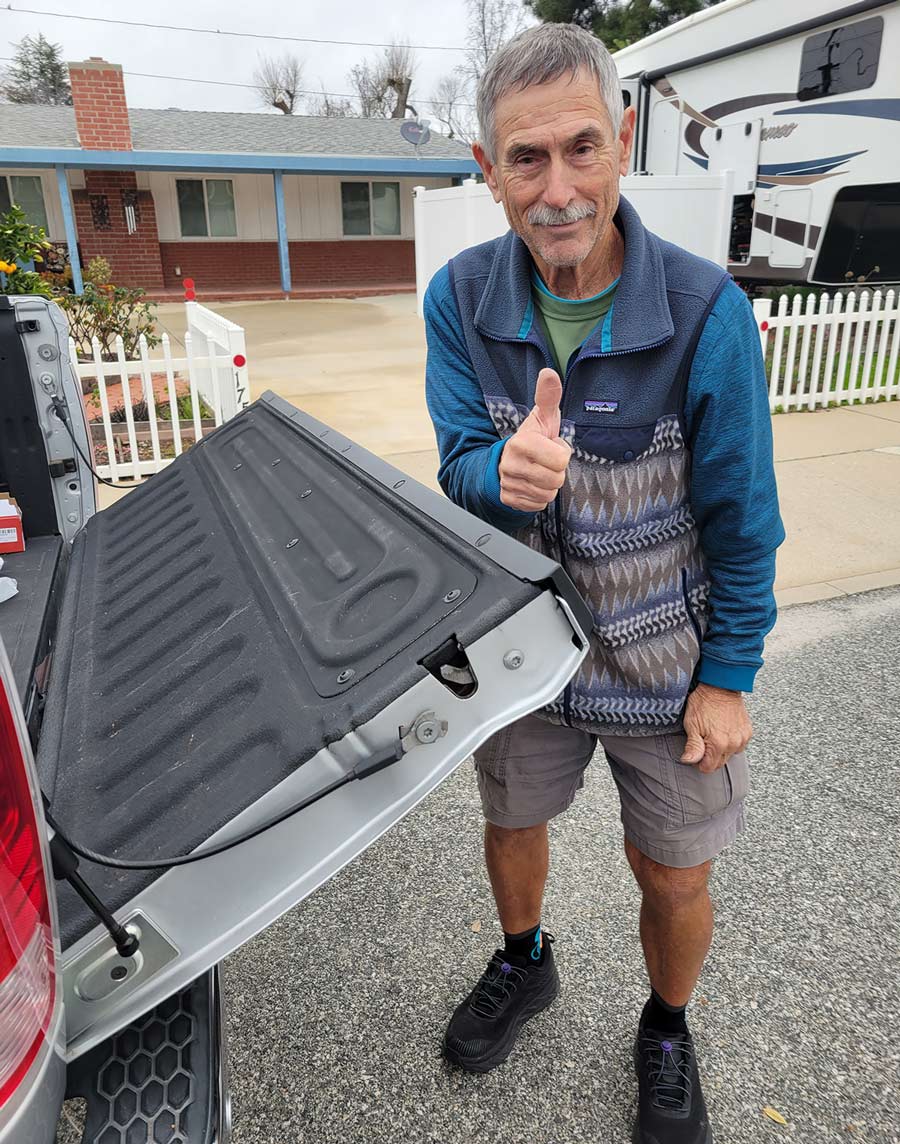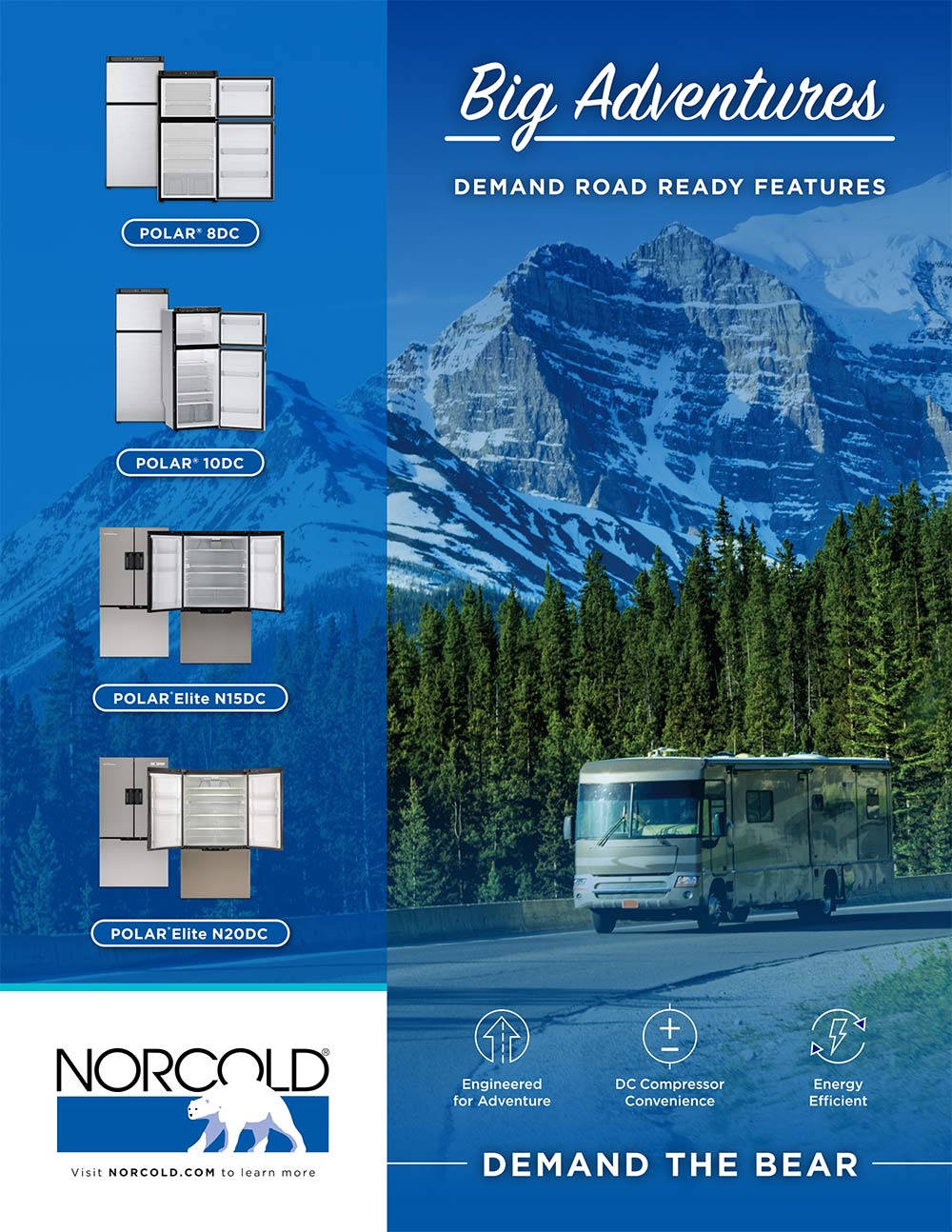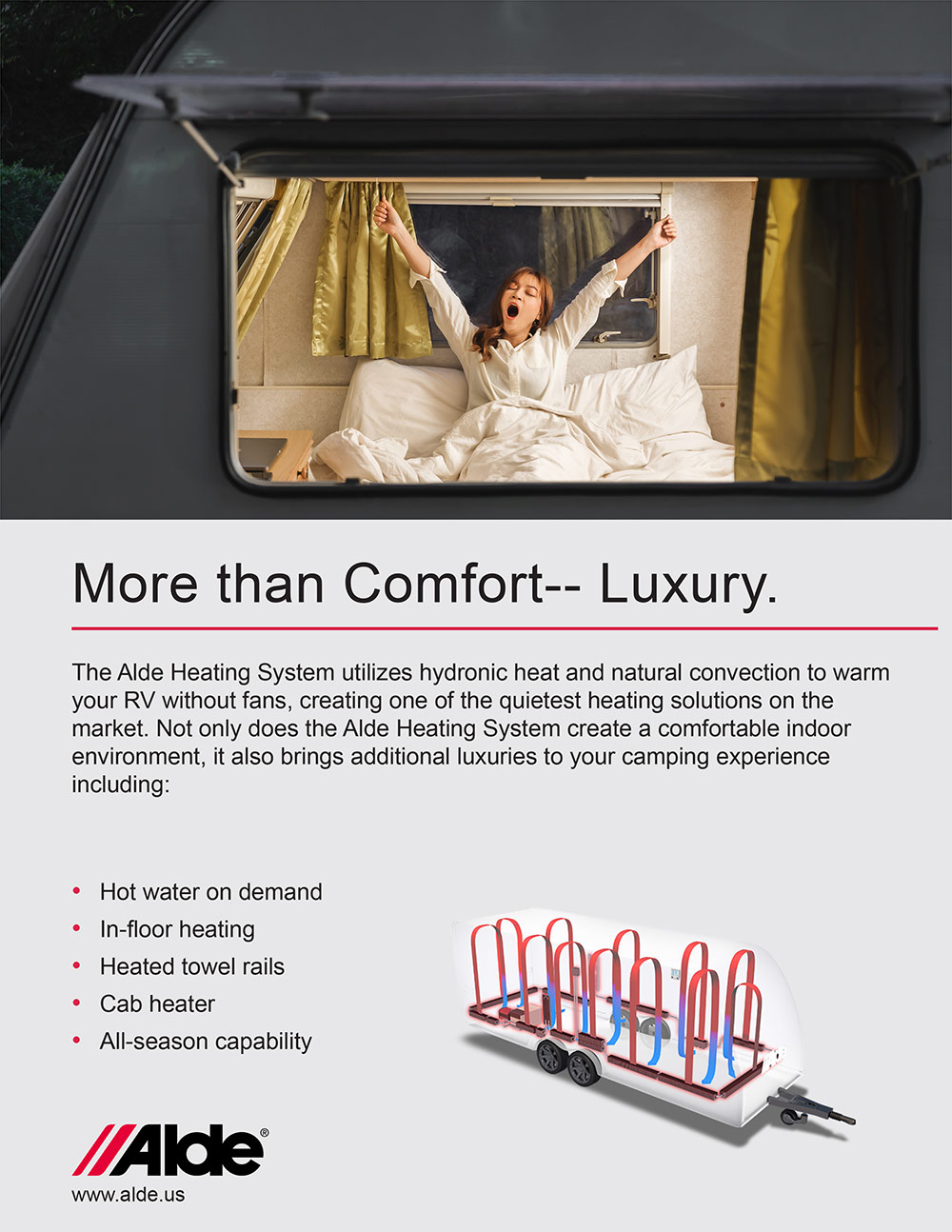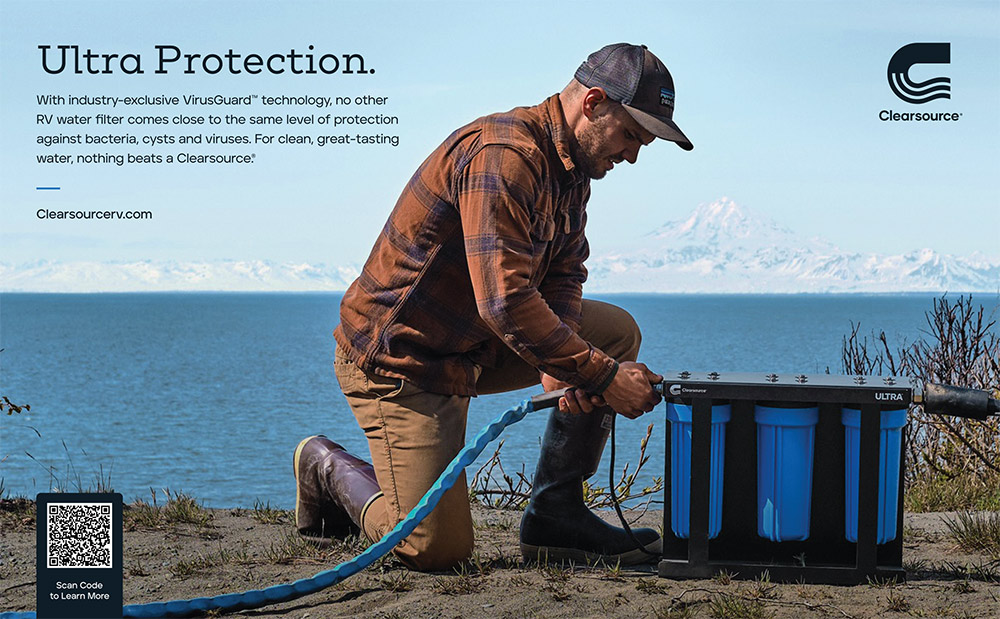Subscriber Access Only
Special Offer
Get 1 year of RV Enthusiast Magazine for just $9.99
Unlock My Offer No ThanksAlready a subscriber? Click here to access full issues.

Boondocking is easily the hottest trend in RVing today — but owners must ensure that their rigs are equipped to provide enough power for going off-grid. Power-hungry appliances and accessories don’t run on 12 volts, so a reliable DC-to-AC inverter is a “must-have.” Here’s what you need to know about inverters — and a look at the top inverters available.
There’s a lot to be said for retaining ownership of an older RV, but aesthetics generally isn’t their strong suit. Interiors, in particular, tend to age badly — and appliances of yesteryear were also a lot less efficient. When the owner of this 2008 Monaco Diplomat began experiencing problems with its cooktop, the crew at Carriers RV Service swapped it out in about an hour’s time.
Actually, “no strings attached” is how you definitely don’t want to be, especially when they control your window shades. As RVE Technical Director Bill Gehr illustrates, however, when the cords controlling day/night shades give up the ghost, you can easily replace them — even while on the road. It’s a DIY-friendly fix that just requires some time and attention to details.
Dumping holding tanks is one of those necessary evils that all RV owners deal with on an all-too-frequent basis. It’s tough enough when the valves are readily accessible. Cable-actuated dump valves used for more remotely located tanks get a bad rap for operational difficulties. These complaints, though, can be mitigated with the right products and proper installation.
Screen doors on an RV take a lot of abuse — and not surprisingly, the hinges may eventually give out. One solution — albeit a relatively expensive one — is to simply replace the door assembly. Here’s another option: craft new brackets out of angle aluminum acquired at a local hardware store. This will restore full use of the screen door for a fraction of the cost of Option No. 1.
A pickup truck’s tailgate is not a lightweight component — and when it freefalls when being opened, it takes a toll on the hinges and can damage the gate. Knowing that a “tailgate-opening assist” is one of the coolest features of new trucks, we set about creating a similar system on an older 2017 Ram 3500 dually — aided by an easily installed kit.
(805) 320-6909
[email protected]
EDITOR – Bruce Hampson
(574) 584-4616
[email protected]
TECHNICAL DIRECTOR
BILL GEHR
(805) 340-5015
[email protected]
ART DIRECTOR – MIKE ACCUARDI
[email protected]
26362 Douglas ave., Elkhart, in 46514
 AFFILIATE NOTICE: RVE Media Group LLC provides links to vendors and products, such as an Amazon Associates account, for informational purposes, but that may provide a commission if you purchase from that link. We often label these links with language that provides transparency if the destination is an advertiser, affiliate, or partner. Products are often provided to RVE at little/no cost for editorial testing purposes by vendors/suppliers. Under no circumstances does this affect the results of the test or install as published in RV Enthusiast. Sponsored content is identified as such directly on the content.
AFFILIATE NOTICE: RVE Media Group LLC provides links to vendors and products, such as an Amazon Associates account, for informational purposes, but that may provide a commission if you purchase from that link. We often label these links with language that provides transparency if the destination is an advertiser, affiliate, or partner. Products are often provided to RVE at little/no cost for editorial testing purposes by vendors/suppliers. Under no circumstances does this affect the results of the test or install as published in RV Enthusiast. Sponsored content is identified as such directly on the content.
PRIVACY POLICY: Our complete privacy policy can be found at https://rventhusiast.com/privacy-policy/



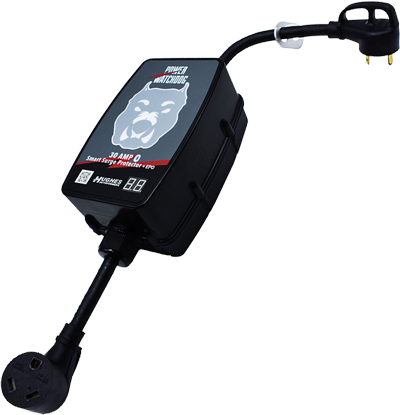
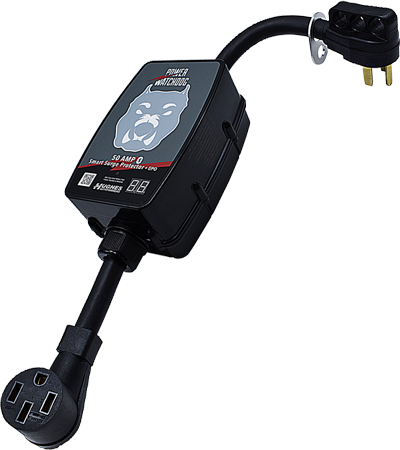
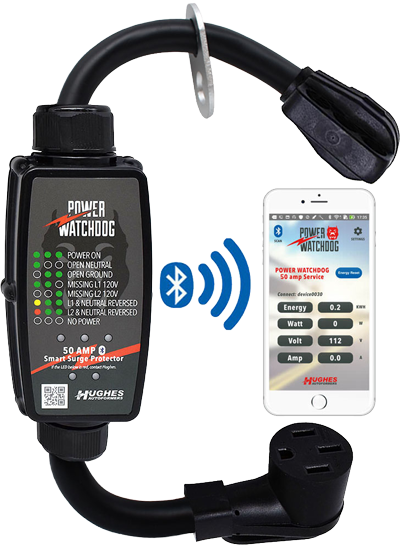
n some ways, camping isn’t the relatively inexpensive lifestyle it used to be. I know, you can say that about anything when inflation is running at 8% a year or more — but campgrounds have really turned up the wick, pricewise, in the last few years as a pandemic-fueled surge in RV ownership led to an even bigger chasm between available campsites and potential campers.
It’s not for nothing that industry publications the likes of RVBusiness and Woodall’s Campground Magazine have carried stories about recent groundbreakings on new RV parks and resorts oftentimes bankrolled by major corporations, private investors and even trusts. These folks are used to making money, and when they see many RV parks and resorts bumping nightly fees by 10%, 20% or more annually — to say nothing of such things as implementing the same sort of “dynamic pricing” the RV industry once held up as yet another reason to forego vacations by planes, cruise ships, hotels and car rental agencies — they see dollar signs.
News & Notes
Tripping the ‘Lightship’ Fantastic
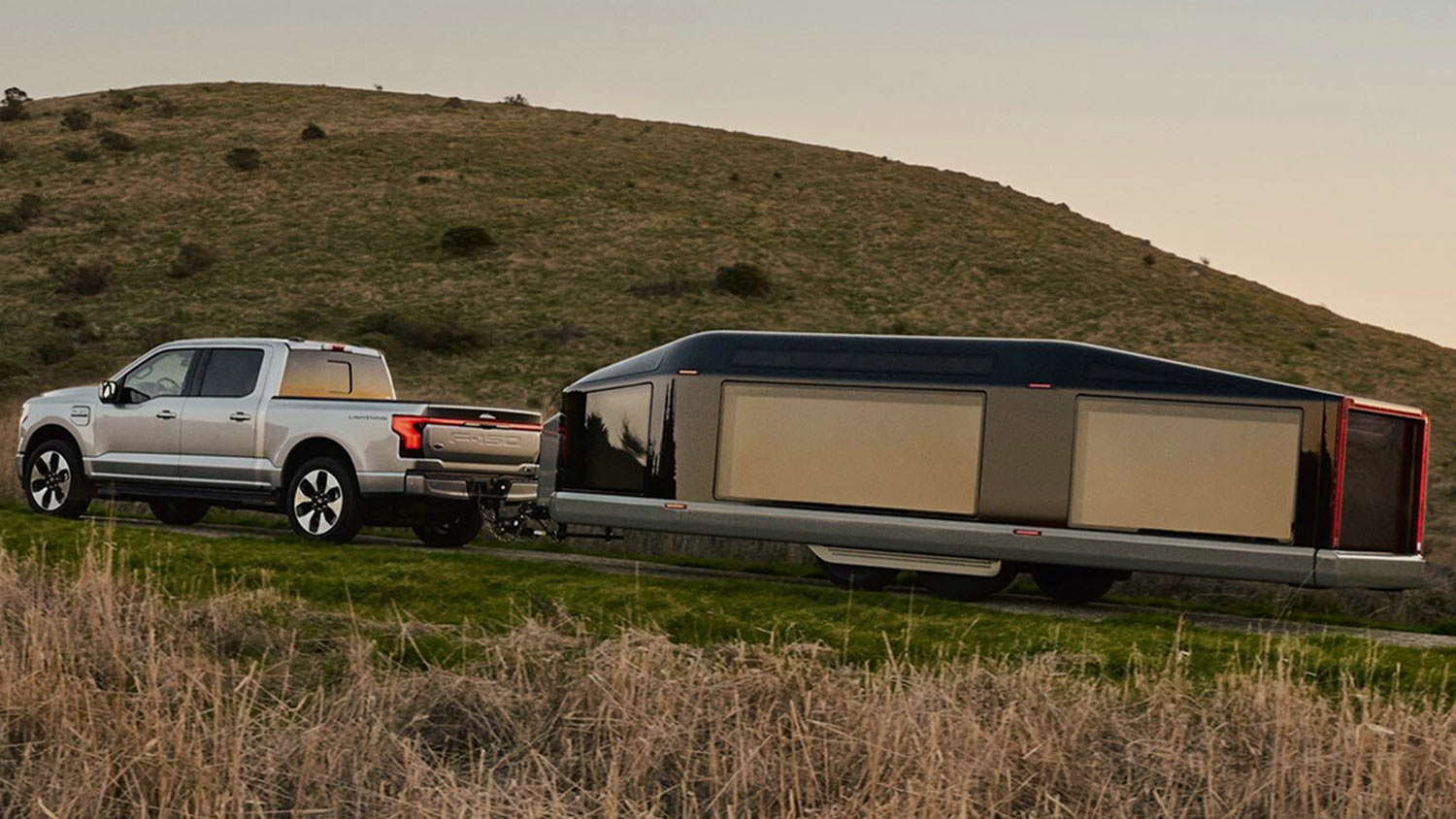
Lightship, said to be America’s first all-electric recreational vehicle (RV) company, announced in early March the launch of the Lightship L1 — an aerodynamic, battery-powered travel trailer and the first purpose-built travel trailer with a self-propulsion system that enables near zero range or mile-per-gallon efficiency loss for the vehicle towing it.
Lightship co-founders Ben Parker and Toby Kraus saw an opportunity in the RV industry that reminded them of the early days they’d seen working at Tesla. Not surprisingly, then, Lightship is taking a clean-sheet approach to building an all-electric recreational vehicle the same way Tesla disrupted the established automakers. The Lightship team, which includes alumni from Rivian, Proterra, Lucid and Zoox in addition to Tesla, is leveraging their expertise in automotive EV development and design to deliver a truly unique experience.
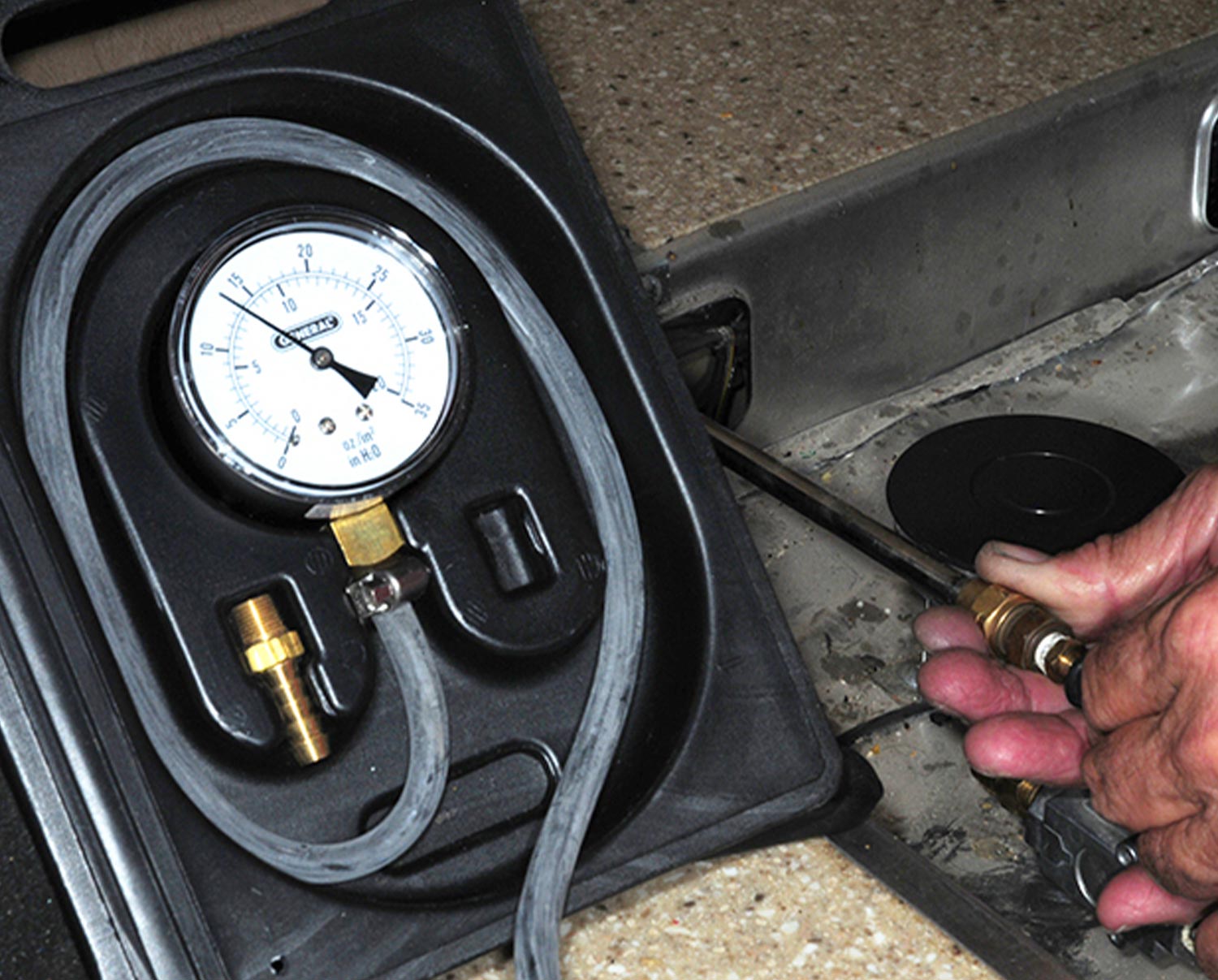
I’m getting a little frustrated. Do you have any ideas?
—Dennis Santino





aking backroads to new adventures can be a lot of fun, but they are not without their challenges. As soon as you camp away from the conveniences of RV parks and campgrounds and that all-important umbilical electrical cord delivering the ability to camp with full hookups, you need a source of auxiliary power to operate the A/C, induction cooktop, refrigerator, dishwasher, ceiling fans, coffee maker and hairdryer among other appliances that plug into a standard 120-volt AC wall outlet.
Boondocking, or camping “off-the-grid,” means you have to rely on electricity provided by a generator or the RV’s battery bank to deliver the proper electrical needs to run 120-volt AC appliances and accessories. The downside with generators is they can be noisy and smelly, which takes away from the peacefulness of boondocking. Generators also require fuel.
Unfortunately, batteries don’t have the power on their own to run those power-hungry appliances and accessories — but their electrical energy can be modified and amplified using an inverter. The inverter takes the juice from the 12-volt DC house battery (or battery bank) and transforms it into 120-volt AC like that supplied by a local power grid. That’s why many new RVs, other than many tiny trailers, have an inverter as part of the factory-installed electrical system.

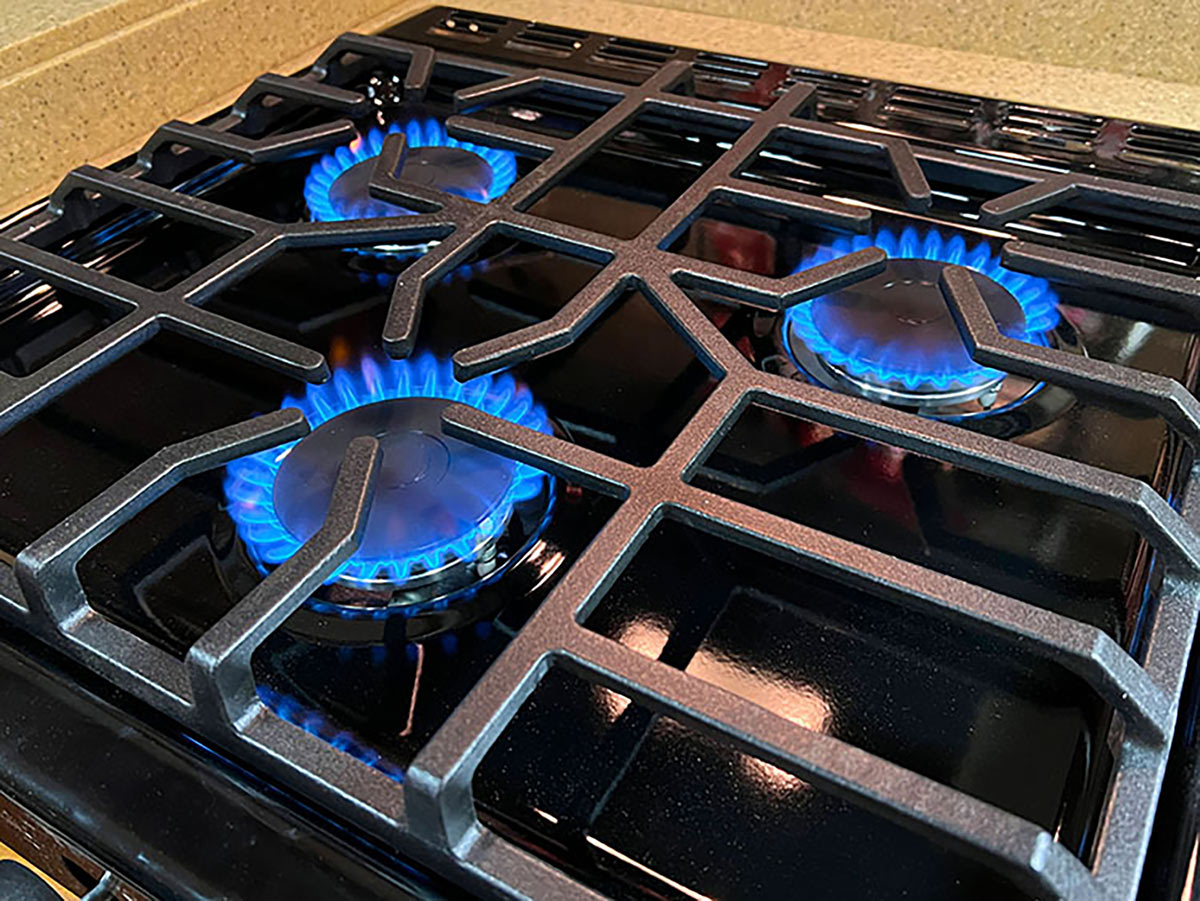
here’s a lot to be said for retaining ownership of an older RV, not the least of which is they have “good bones,” a solid build — and can be picked up for not a lot of money.
One place they tend to come up short, though, is in aesthetics. You don’t have to go back to the shag-carpet days of the GMC motorhome (built from 1972 through the ’78 model years, for those keeping score) to find looks that haven’t aged well. And, in the case of appliances, neither are they anywhere as efficient as those built today.
When the crew at Carrier RV Service in Eugene, Washington, was charged with replacing the three-burner cooktop in a customer’s well-cared-for 2008 Monaco Diplomat motorhome, appearances admittedly had something to do with it — “It didn’t go with the other upgraded appliances in the galley,” admitted Teresa Carrier — but it also had one burner that was inoperable, and finding replacement parts for the outdated and long-discontinued Atwood High Output gas stove was becoming a tougher task.

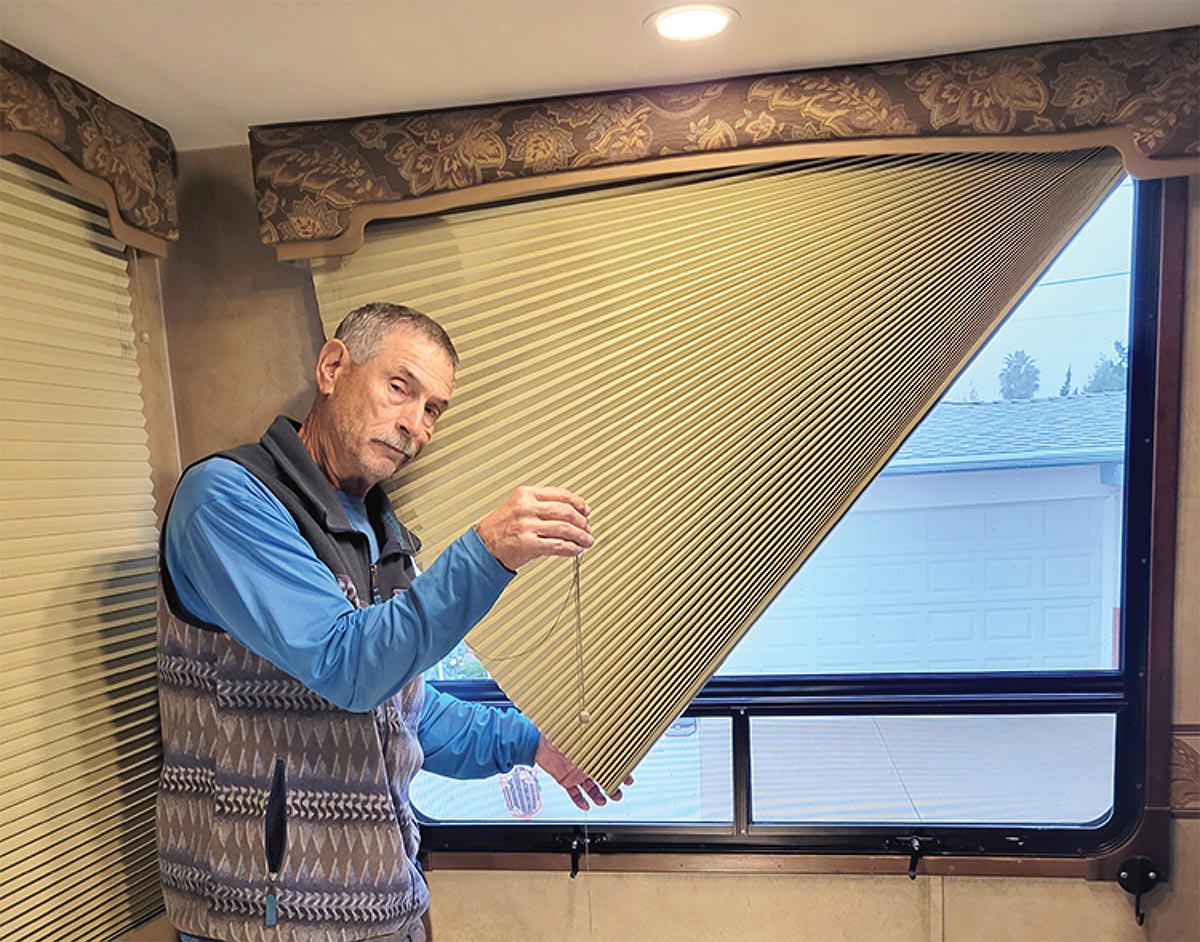
he window coverings of choice for many years have been shades controlled by some type of a string or cord that runs vertically on both sides. When they work, the operation is smooth — but when they break, the shades are rendered useless and drop like a rock. It’s a frustrating dilemma that most RVers have contended with until the proliferation of pull-down roller shades.
Most people open and close their pleated shades at least twice a day, so do the math: you can see why they have a propensity to break, usually at inopportune times. I’m a full-timer, which means window coverings are moved at least 730 times a year.
Fortunately, you can carry the cord and tools on board to make the necessary repairs without being at the mercy of service centers needing long lead times for appointments. My blinds see heavy use and after one of the chords came apart, I figured it would only be a matter of time before the rest of them started breaking, so I initiated the restringing process.


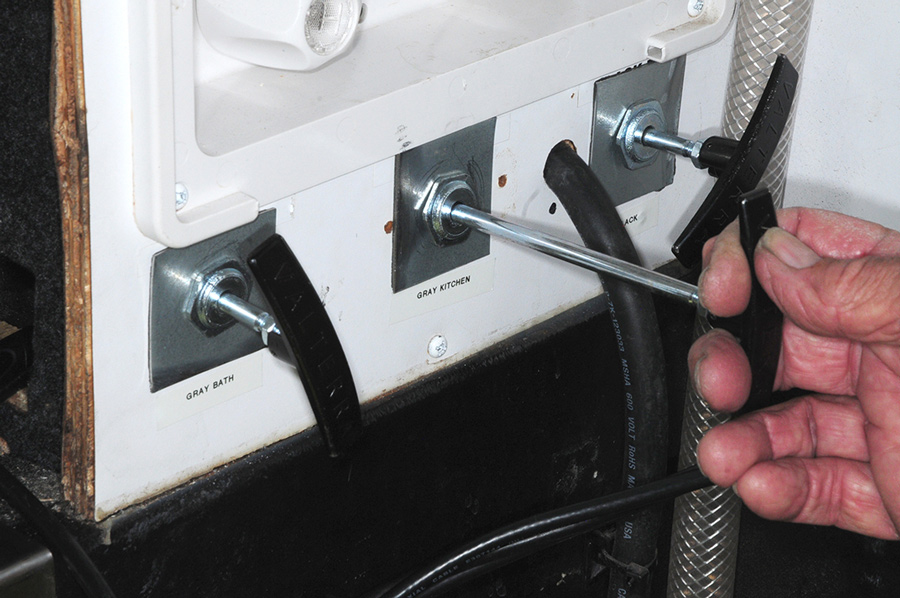
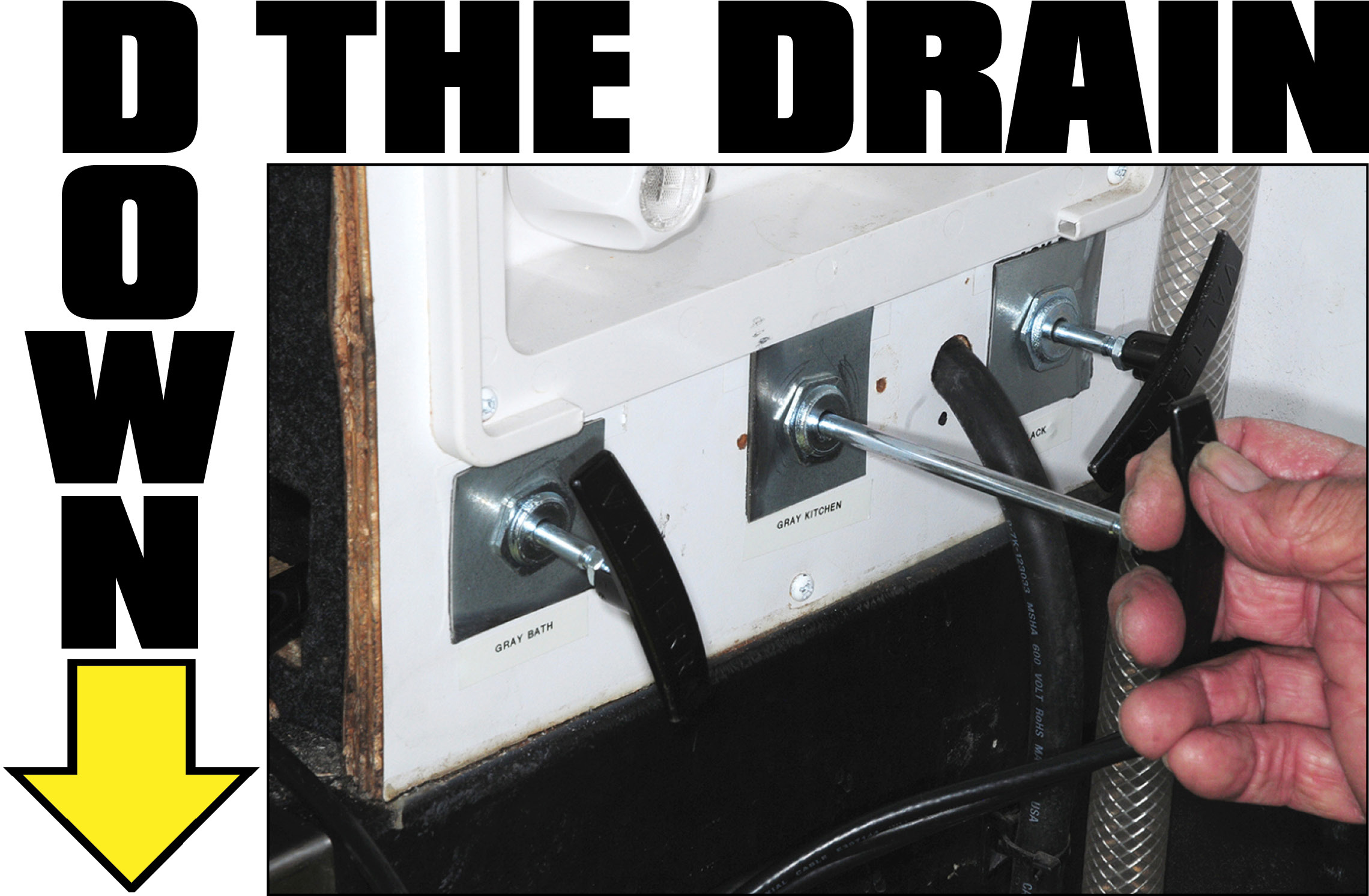
umping the holding tanks is one of those necessary evils that all owners deal with on an all-too-frequent basis. Once the black and/or gray tank(s) fill up, the contents must be dumped into the sewer or septic system. The process is easy: a special 3-inch hose is connected to the RV outlet fitting via bayonet nomenclature, the other end is tightly sealed into the sewer inlet, and the valves are opened with a T-handle.
In most cases, anyway.
Many valves are attached near the outlet pipe and readily accessible, while some are operated from a remote location using cables or switches for electric systems. When the cables break or the valves stick, you’ll have to tear into the bowels of the underbelly to make the repairs or replacement.

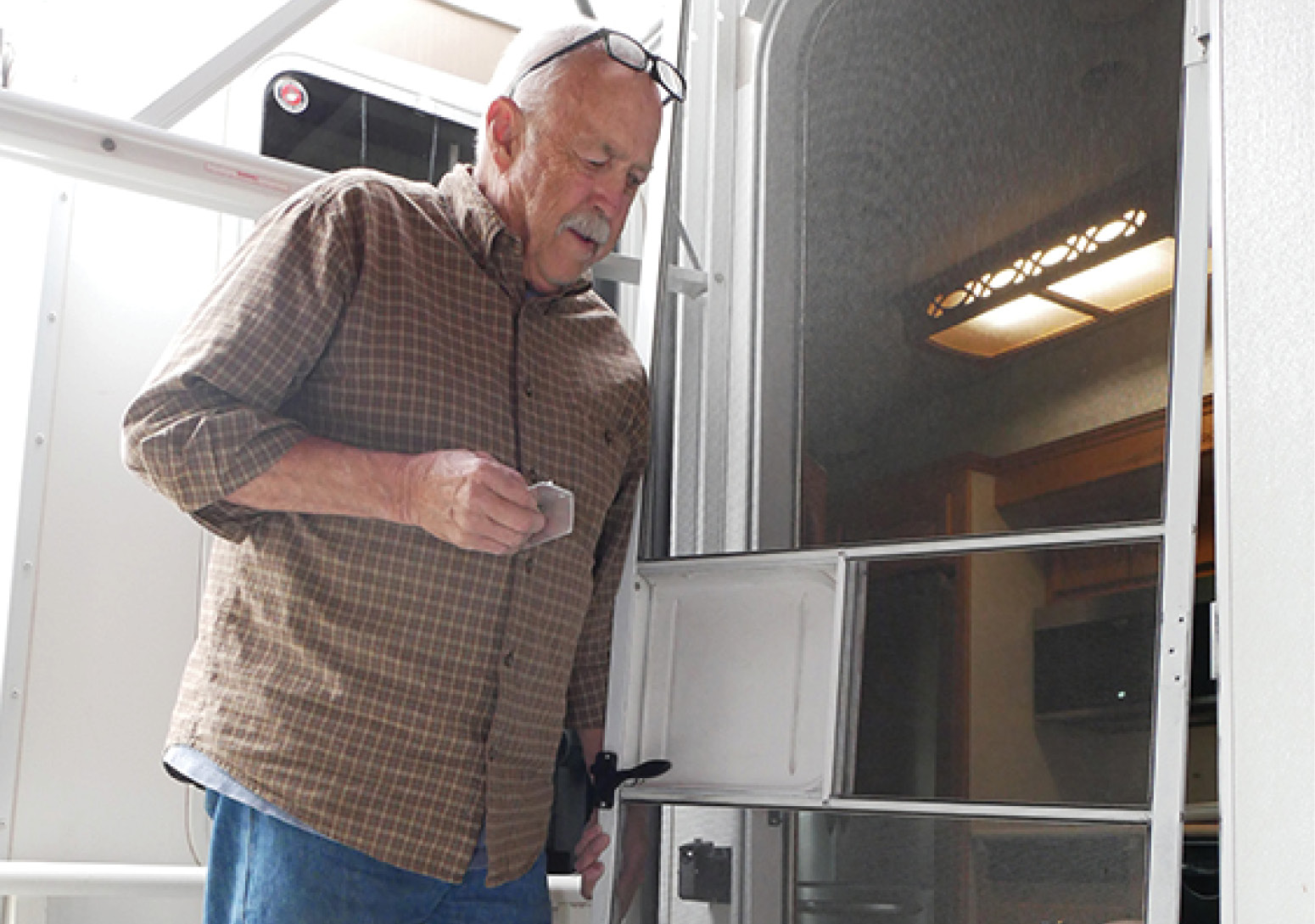

hen the hinges on the screen door break, it’s one of those “oh, no!” moments. While the screen door can be replaced by removing the screws in the hinges, it’s not possible to replace the hinges themselves when they break. Years of opening and closing can lead to broken hinges, a common situation, which rendered the screen door unusable on this older fifth wheel, and the cost — not to mention the labor — to replace the entire screen/entry door assembly can be daunting.
Fortunately, there is a rather simple solution: build new brackets to restore the function of the original hinges.
The process is not complicated if you’re the least bit handy — and it only takes about an hour to complete the job. You’ll need to purchase a short length of 1 ½-inch angle aluminum (although 1 ¼-inch stock may work, depending on the hinge size) at a local hardware store, which can be cut into brackets and mounted over the existing hinges. It may be hard to find a short length of angle aluminum, and since you’ll probably only need 9-12 inches worth, plan on having some leftovers.

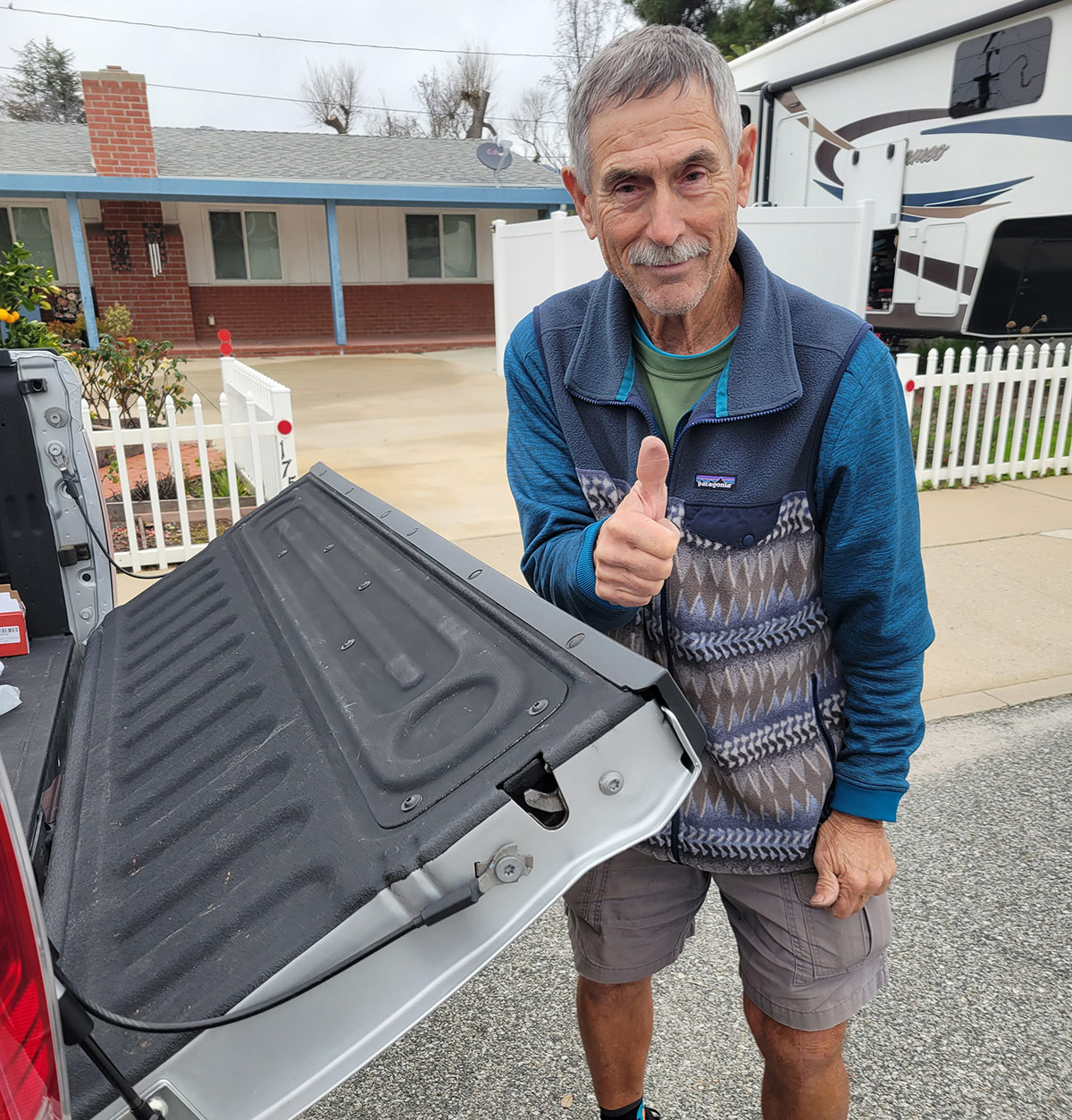

ulling a fifth wheel with a pickup truck makes it necessary open and close the tailgate several times a day. You know the drill: open the tailgate to hitch up, close to get going, open to unhitch, close to use the truck as a daily driver, open to unload chairs and other things, and so on. It’s not rocket science, but I can’t even remember how many times I’ve had my hands full and accidentally let the tailgate slam open. And, unfortunately, there’s a lot of weight in motion when the tailgate falls open — and over time, the wear-and-tear on the hinges can lead to expensive repairs, not to mention the sheet metal damage if you happen to let it fall onto the A-frame jack when a travel trailer is still hitched up.
Recognizing this dilemma, some new trucks are outfitted with a tailgate opening assist, which slowly regulates the downward movement. This convenient feature spurred me to seek out an aftermarket device that can do the same thing. Of course, the first place I looked was Amazon — and just what I needed popped up. There were several kits to choose from, so I relied on the reviews to find one that would not only work well but last without breaking; the other priority was ease of installation. As a result, I settled on the Tailgate Assist Shock Strut 43301 Silver Classic for $24.29. This kit is designed for the 2009-2018 Ram trucks, which fit the parameters for the 2017 3500 dually project truck.



